Recent Publications
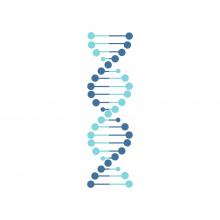
Gon Carmi, Somnath Tagore, Alessandro Gorohovski, Aviad Sivan, Dorith Raviv-Shay, Milana Frenkel-Morgenstern: Design principles of gene evolution for niche adaptation through changes in protein-protein interaction networks (Sci Rep .)
In contrast to fossorial and above-ground organisms, subterranean species have adapted to the extreme stresses of living underground. We analyzed the predicted protein-protein interactions (PPIs) of all gene products, including those of stress-response genes, among nine subterranean, ten fossorial, and 13 aboveground species.

Eric S Shinwell: Newborn care during the COVID-19 pandemic must adapt as evidence accumulates (Acta Paediatr . )
Editorial: The COVID‐19 pandemic is an ongoing learning experience for the healthcare professions and the world at large. A sense of profound humility emerges from mankind's limited success in developing and implementing consensus‐based guidelines for the control and treatment of this frightening disease. Specifically, the care of infants born to women with suspected or proven COVID‐19 infection raises challenges that call into question established and evidence‐based policies and treatments. As new evidence becomes available, individual caregivers and professional organisations are required to re‐assess potentially best practices that are appropriate in each setting.

Menachem Alcalay, Moshe Ben Ami, Anatoly Greenshpun: Fractional-Pixel CO 2 Laser Treatment in Patients With Urodynamic Stress Urinary Incontinence: 1-Year Follow-Up (Lasers Surg Med .)
Vaginal pixelated low power and long pulses (LPLP) CO2 laser has been suggested as an optional treatment for stress urinary incontinence (SUI) with many studies reporting short-term improvements. The objective of this study was to assess the 1-year subjective and objective efficacy of vaginal CO2 laser in women with urodynamic SUI.

Baruh Polis, Abraham O Samson: Neurogenesis versus neurodegeneration: the broken balance in Alzheimer's disease (Neural Regen Res . )
Alzheimer’s disease (AD) is a progressive neurodegenerative disorder, eventually manifesting in severe cognitive dysfunction. Despite the recent proliferation of encouraging preclinical studies and clinical trials, scientific society is still far from a complete consensus regarding the AD etiology and pathogenesis. Accordingly, no approved AD-modifying therapies are currently available. Nevertheless, novel concepts predicated upon the latest discoveries and comprehension of the disease as a multifactorial disorder are paving the road to the successful AD treatment.

Tomer Meirson: Cardiovascular adverse events associated with hydroxychloroquine and chloroquine: A comprehensive pharmacovigilance analysis of pre-COVID-19 reports (Br J Clin Pharmacol .)
There is a clinical need for safety data regarding hydroxychloroquine (HCQ) and chloroquine (CQ) during the coronavirus (COVID-19) pandemic. We analysed real-world data using the U.S. Food and Drug Administration Adverse Events Reporting System (FAERS) database to assess HCQ/CQ-associated cardiovascular adverse events (CVAEs) in pre-COVID-19 reports.

Ibrahim Marai, Nizar Andria, Liza Grosman-Rimon, Evgeni Hazanov, Wadi Kinany, Diab Ghanim, Offer Amir, Shemy Carasso: Clinical and echocardiographic characteristics of patients with preserved versus mid-range ejection fraction (Int J Cardiovasc Imaging .)
A wide range of ejection fraction (EF) thresholds have been used to categorize patients with heart failure (HF) with "preserved" EF. Our goal was to characterize the clinical and echocardiographic differences among patients with cardiac structural/functional alterations and mid-range EF (mrEF) (EF 40-49%) compared to preserved EF (pEF) (EF ≥ 50%), irrespective of HF.

Chaim Putterman: Single Cell RNA Sequencing in Human Disease: Renal, Pancreatic, and Viral Diseases (Adv Exp Med Biol .)
In this chapter, we discussed some of the specific uses of scRNA-seq in exploring viral infections and diseases of the kidney and pancreas. This review, however, is by no means exhaustive, and indeed this technology has advanced the study of pulmonary and cardiac diseases, transplant immunology, cancer, and many others as well. Nevertheless, the above reviewed studies do illustrate the utility and resolution of scRNA-seq in understanding exact cellular compositions, discovering heterogeneity within cellular expression patterns, and uncovering clues that may eventually lead to the development of more targeted and personalized therapies. Additionally, the increasing availability of whole tissue cellular atlases in both health and disease as a result of scRNA-seq studies provides an important resource to better understand complicated molecular signaling patterns and events that are similar and different between human diseases.
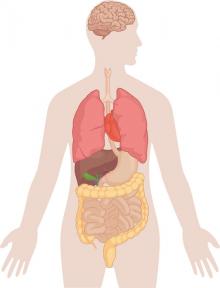
S Ben-Simon, O Koren: Alterations of the salivary and fecal microbiome in patients with primary sclerosing cholangitis (Hepatol Int .)
Primary sclerosing cholangitis (PSC) is a chronic, progressive liver disease known for its frequent concurrence with inflammatory bowel disease. PSC can progress to cirrhosis, end-stage liver disease, hepatobiliary cancer, and/or colorectal cancer. The etiopathogenesis of PSC remains poorly understood, and, as such, pharmacotherapy has yet to be definitively established. Little is known about the salivary microbiome in PSC and PSC-IBD. This study aimed to evaluate the oral microbiome of patients with PSC, with association to these patient's fecal microbial composition.
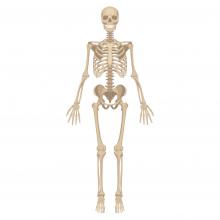
Avi Benov: Neck injuries - israel defense forces 20 years' experience (Injury . )
Neck injuries are an important cause of combat mortality and morbidity. This study's objective was to examine the characteristics and causes of neck injuries among Israel Defense Forces (IDF) and emphasize the best treatment protocols for the advanced life support providers in the prehospital combat environment.

Limor Meoded Danon: Psychosocial approaches and discursive gaps in intersex healthcare: findings from an Israeli-German action research study (Cult Health Sex . )
In the past several decades, conflicting discourses have coexisted in the field of intersex studies, including the pathologising discourse of the biomedical disciplines and the affirmative, subjective psychosocial discourse of people born with intersex bodies and their advocates. Intersex activists call for a positive discourse on intersex bodies and a humanistic healthcare approach that accepts and protects intersex bodily autonomy to replace continuing harmful, traumatic treatments aimed at normalising variations of sex characteristics (VSC). Our awareness of the biomedical discursive dominance prompted us to initiate Inter-Care and Awareness, an intercultural German-Israeli action research project. This paper introduces the project and explores intercultural approaches to psychosocial intersex care using an action research framework.

Dor Shahar, Jacob Bornstein: Cervical traction suture technique during large loop excision of the transformation zone increases complete lesion excision (J Gynecol Obstet Hum Reprod .)
A surgical technique was developed in the past by our group to reduce the rate of inadvertent complications. It was then seemed that it also increased the rate of complete lesion excision. The objective of the study was to evaluate the effectiveness of a cervical traction suture technique in increasing the prevalence of complete lesion excisions and reducing the incidence of unintended injuries to adjacent tissues during large loop excision of the transformation zone (LLETZ).
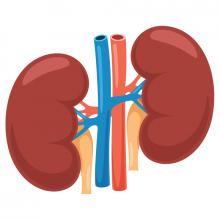
Chaim Putterman: Phoenix from the flames: Rediscovering the role of the CD40-CD40L pathway in systemic lupus erythematosus and lupus nephritis (Autoimmun Rev . )
Lupus nephritis (LN) is a significant complication of systemic lupus erythematosus (SLE), increasing its morbidity and mortality. Although the current standard of care helps suppress disease activity, it is associated with toxicity and ultimately does not cure SLE. At present, there are no therapies specifically indicated for the treatment of LN and there is an unmet need in this disease where treatment remains a challenge.
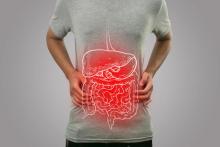
Proton Pump Inhibitor Use May Increase the Risk of Diverticulitis but Not It's Severity among Patients with Colonic Diverticulosis: A Multicenter Study (J Clin Med .)
Colonic diverticular disease, especially diverticulitis constitutes a major cause of hospitalization and an economic burden in developed countries. Proton pump inhibitors (PPIs) are among the commonest drugs used to treat several diseases affecting the upper gastrointestinal tract. A few studies have reported that the use of Proton Pump Inhibitors PPIs caused dysbiosis. In this study, we searched for a relationship between PPI use and the onset and severity of diverticulitis in patients with colonic diverticulosis. (Wisam Sbeit, Tawfik Khoury, Anas Kadah, Waseem Asadi, Amir Shahin, Ahmad Lubany, Mohammed Safadi, Haya Haddad, Ruba Abu Ahmad, Sami Abu El Hija, Rand Abboud, Amir Mari)
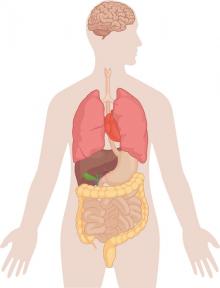
Wisam Sbeit, Tawfik Khoury, Anas Kadah, Amir Mari: Long-Term Safety of Endoscopic Biliary Stents for Cholangitis Complicating Choledocholithiasis: A Multi-Center Study (J Clin Med .)
Treatment of cholangitis complicating choledocholithiasis includes biliary sphincterotomy and stone extraction. In certain cases of elderly comorbid patients with high risk for definitive endoscopic treatment, biliary stenting is the only measure for relieving biliary obstruction. We aimed to report the safety of retained biliary stone.




